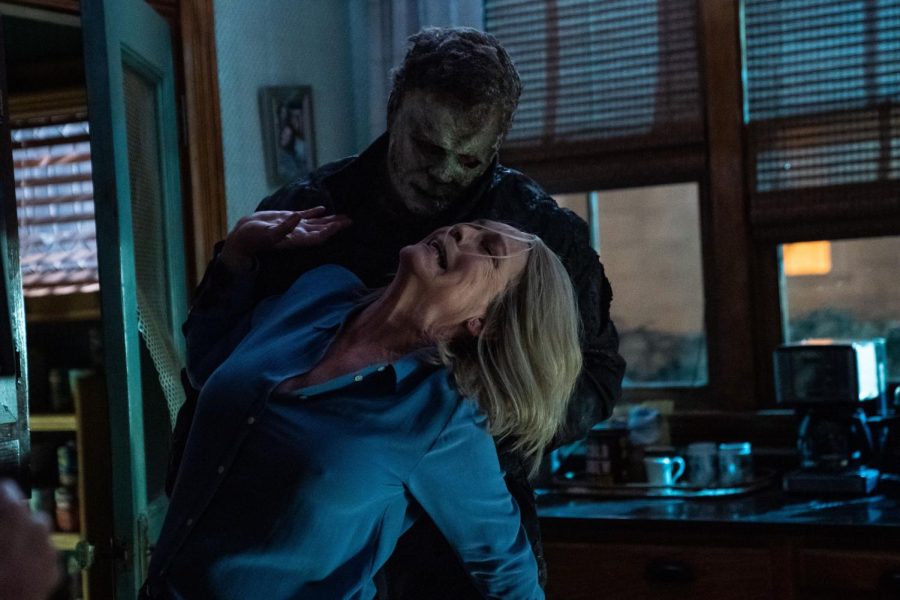‘Halloween Ends’ offers dissatisfying conclusion to Blumhouse trilogy
October 21, 2022
This article contains spoilers for Halloween Ends.
After over four decades of babysitter slayings and crime frenzies, the town of Haddonfield, Illinois can celebrate Halloween in peace — for now.
Released in theaters Friday, David Gordon Green’s “Halloween Ends” placed a seal on the beloved horror saga and delivered audiences — and the Strode family — a resolution to the crimes of Michael Myers. Ending Green’s “Halloween” trilogy with Blumhouse, the film aimed to conclude the story of the Strode family 44 years in the making, but ultimately created a rushed, unsatisfying plot in the process.
Jamie Lee Curtis shines as beloved final girl Laurie Strode, once again reviving the resourceful, tenacious heroine she first showed audiences in 1978. The film takes place years after Michael’s last attack, and Laurie spends her days writing her memoir and reflecting on her years of terror.
However, Laurie’s years in retirement from braving the threat of Michael do not come without paranoia. When her granddaughter Allyson (Andi Matichak) falls for Corey Cunningham (Rohan Campbell), a Haddonfield outcast who accidentally killed a child while babysitting on Halloween, Laurie senses Michael’s evil in Corey and tries to warn her granddaughter — the driving conflict between the film’s two leading protagonists.
Despite marking the end of the Strodes’ battle with Michael Myers, the film’s plot ultimately sidelines the Strode women and instead focuses primarily on Corey, who becomes a copycat and then accomplice to the original killer. The movie focuses on Corey’s descent into evil, as well as his relationship with both the people of Haddonfield and Michael Myers himself. Dedicating so much screen time to the copycat killer and new addition to the franchise in the final film of the Blumhouse trilogy was an ill-fitting choice that ultimately derailed the story supposedly centered around the Strode family.
The film also failed to build to a final faceoff between Laurie and Michael, despite playing into the nostalgia of the famous duel by incorporating a flashback sequence of previous “Halloween” movies. The final battle occurs in the last third of the movie, but the film does little to build tension between the two adversaries leading up to it. Michael Myers does not contribute to any of the film’s gore until later in the movie, leaving more tension to build between Laurie and Corey than Laurie and Michael — a choice which fails to restore the satisfying scares and bloody fight scenes characteristic of both the “Halloween” franchise and its long-standing main villain.
In their short-lived final faceoff, Laurie successfully kills Michael with the help of her granddaughter, the Haddonfield police department and a landfill’s garbage grinder. Though a satisfying victory, the battle ultimately unfolds quickly and conveniently, failing to live up to the highly anticipated end of Michael Myers.
From Carpenter’s original “Halloween” theme to flirtatious moments between Laurie and deputy Frank Hawkins — the officer who found Michael Myers in the 1978 film — the film thrives on the franchise’s nostalgic power. Despite its ill-fitting plot, “Halloween Ends” offers an exciting watch for fans of the franchise, ending the Strode saga on a victorious note.
2 ½ babysitter slayings out of 5













